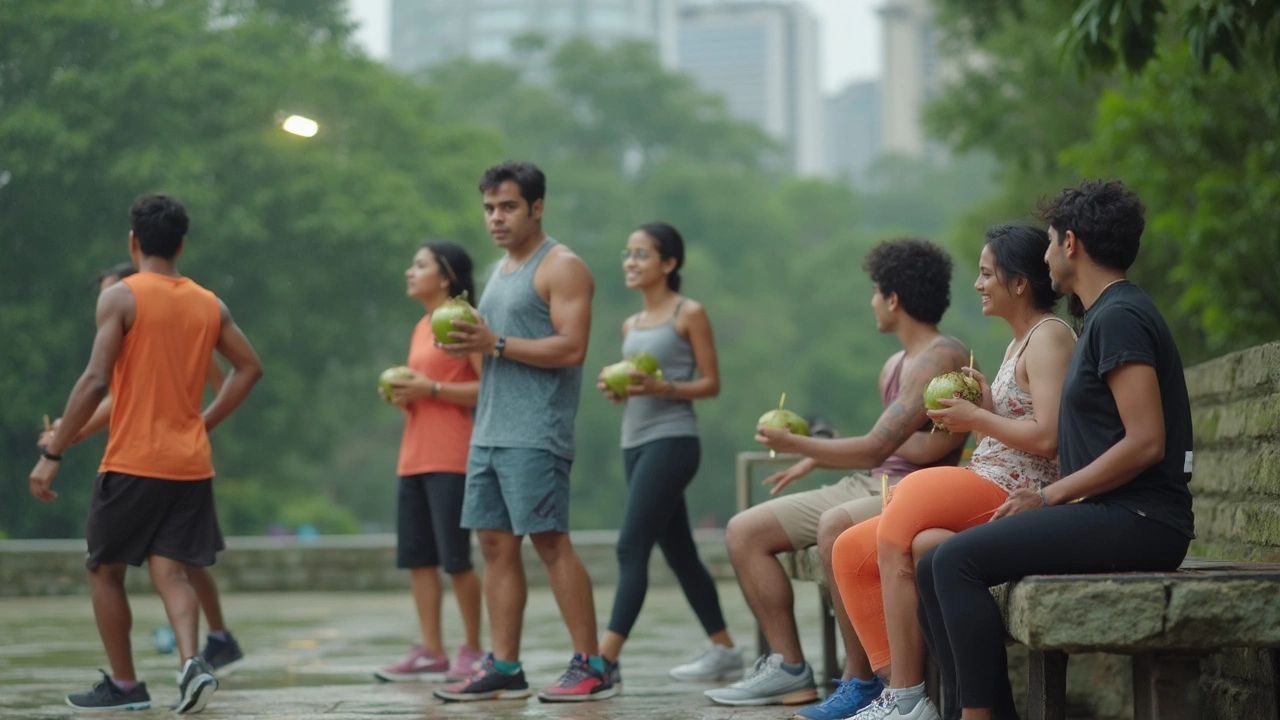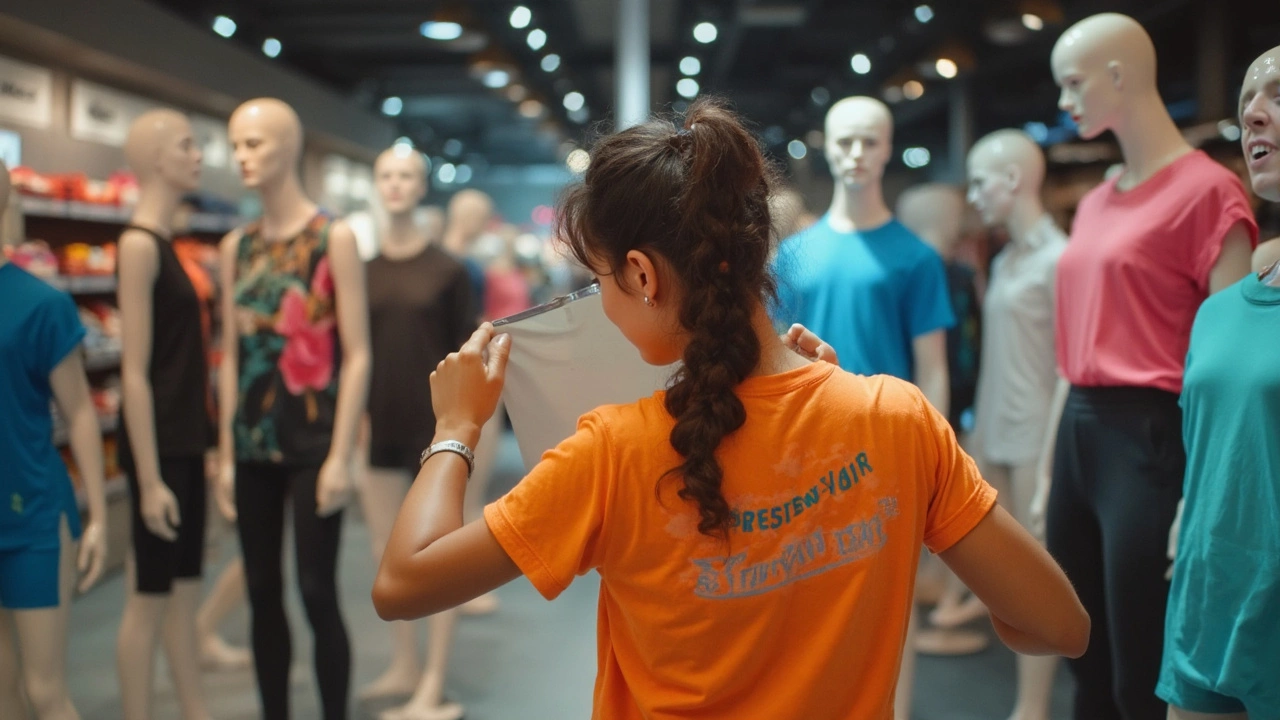Ever ended up sweating buckets in a shirt that was supposed to keep you cool? Or tried to play basketball in what felt like pajamas? A lot of people get caught in the sportswear vs activewear trap, thinking it’s all just gym clothes. Turns out, there’s a real difference, and it can make or break your comfort when you’re on the move.
If you’ve ever shopped for workout or casual gear, you’ve seen racks labeled ‘sportswear’ and ‘activewear,’ often side by side. But those labels aren’t just marketing fluff. Knowing what separates these two can help you buy the right stuff, stay comfortable, and even save some cash.
The next time you’re eyeing a slick pair of leggings or a top with the word ‘performance’ slapped on the tag, you’ll know exactly what you’re looking at—and whether it’ll hold up for your sprint, stretch, or Saturday coffee run.
- What Counts as Sportswear?
- Defining Activewear Isn’t So Simple
- Key Differences That Actually Matter
- Tips for Choosing the Right Gear
What Counts as Sportswear?
So, what exactly is sportswear? It’s more than just anything you wear to the gym. Sportswear is designed for specific sports or workouts, whether it’s soccer, running, tennis, or lifting weights. Each piece usually matches the demands of the activity—think basketball shorts with plenty of room to jump, or a soccer jersey that breathes and wicks away sweat. The design comes down to performance, not just looks.
When you check the tag, you’ll see materials like polyester, nylon, or spandex. These fibers dry fast, stretch when you move, and don’t get bogged down with sweat. Cotton is a rare guest—nothing ruins a run like a drenched tee. If you’re shopping for sportswear, you’ll notice these technical fabrics everywhere.
- Running apparel: lightweight shorts and moisture-wicking tops
- Basketball: loose-fit shorts and sleeveless jerseys for airflow
- Tennis: polos made to stretch but keep their shape
- Soccer: quick-dry jerseys and socks with extra support
Ever wondered which sportswear sells best in the U.S.? Here’s a quick breakdown of popular items:
| Sportswear Item | Popularity (Market Share in US, 2024) |
|---|---|
| Running Shoes | 36% |
| Performance Shorts | 18% |
| Athletic Leggings | 16% |
| Compression Shirts | 12% |
| Sports Bras | 10% |
| Team Jerseys | 8% |
Sportswear is made to take a beating, especially with all the sweating, stretching, and jumping. If your gear doesn’t feel tough or is soaking up sweat like a sponge, it probably isn’t true sportswear.
Defining Activewear Isn’t So Simple
Activewear can seem like a catch-all for anything stretchy with a logo, but it’s actually designed for flexibility—literally and style-wise. Unlike true sportswear, which is built for specific sports, activewear is meant to handle both a bit of sweat and a trip to the grocery store without looking out of place.
Manufacturers pack activewear with features that let you move, bend, and sit comfortably—think leggings with pockets, hoodies that actually breathe, and tees that won’t stick to your back after a brisk walk. The idea is clothing that moves with you, whether you’re hitting a quick yoga class or running errands right after.
What’s really wild is that the rise of activewear is linked to social changes. The whole ‘athleisure’ trend kicked off in the 2010s, as people started wearing gym-inspired clothes to brunch, work, and, well, anywhere. There are even office-friendly joggers now. Brands like Lululemon, Nike, and Adidas have blurred the line even more by making gear that works just as well on a coffee run as it does during light exercise.
Here’s what you’ll usually find in good activewear:
- Soft, stretchable fabrics like nylon, spandex, and polyester blends
- Moisture-wicking (so you don’t walk around with sweat patches)
- Style that looks casual, not like you’re about to run a marathon
- Pockets and adjustable fits for daily use
When you grab a pair of joggers or a zip-up hoodie and don’t feel self-conscious wearing it away from the gym, that’s probably activewear. The goal: clothes that keep up with whatever your day throws at you, exercise or not.

Key Differences That Actually Matter
Let’s skip the buzzwords. The main thing that sets sportswear apart from activewear is what it’s actually built for. Sportswear is designed for performance in a specific sport—think soccer shorts, basketball jerseys, or tennis skirts. Every part of that clothing has a reason to exist, from sweat-wicking to freedom of movement or safety.
Activewear, meanwhile, focuses more on versatility. It covers clothes you might wear for yoga, a walk, or just hanging out at a café. Looks matter as much as function. You’ll find bright colors, trendy cuts, and comfort built in, but the ability to crush a 10K run isn’t guaranteed.
Check out this quick breakdown:
| Feature | Sportswear | Activewear |
|---|---|---|
| Main Purpose | Sport-specific performance | Everyday activity, casual comfort |
| Material | Tech fabrics for breathability and moisture control (like Dri-FIT or Climacool) | Soft blends, cotton, spandex, sometimes performance but not always |
| Fit | Designed for athletic movement; sometimes tight, sometimes loose, but always functional | Often more relaxed; fits trends and lifestyle needs |
| Durability | Made to survive repeated, intense wear | Built more for day-to-day use, not always for heavy workouts |
| Style | Function over looks most of the time | Looks matter as much as comfort |
Here’s why you should care about these differences:
- If you use activewear for heavy sports, don’t be surprised if it wears out fast or doesn’t manage sweat well.
- If comfort all day is what you need, sportswear could feel too technical or stiff for just lounging.
- Small design things—like mesh ventilation, thicker seams, or stain resistance—are usually found only in true sportswear.
Quick tip: According to the NPD Group, activewear sales in the U.S. jumped 24% year-over-year in 2021, showing that more people mix their workout gear with casual clothes. But brands use the names differently, so always check the label and feel the fabric before you buy.
Tips for Choosing the Right Gear
Shopping for workout clothes can get confusing fast. Here’s how to keep it simple and get the best bang for your buck.
- Sportswear is built for specific activities. For running, look for moisture-wicking tees and shorts—polyester or blends usually do it better than cotton. Playing soccer? Go for lightweight, stretchy gear, often with mesh panels for airflow.
- Activewear is made for all-day comfort and style. Think joggers or leggings you can wear from errands to yoga class. Fabrics are often softer, sometimes with spandex blends so you can stretch and move easily.
- Check labels for technical features. Terms like "breathable," "quick-dry," and "anti-odor" aren't just marketing—they matter. A study in 2023 showed that synthetic fabrics can dry up to 50% faster than cotton, so consider this if you sweat a lot.
- Try it on and move around. Jump, squat, or twist in the store dressing room. Nothing's worse than buying pants that ride up or shirts that cling in all the wrong spots once you start moving.
- Don’t get fooled by price. Some big brands charge more because of the logo. You can get reliable sportswear basics at places like Decathlon or even your local department store.
Want a quick side-by-side? Here’s a table comparing key stuff to look for:
| Feature | Sportswear | Activewear |
|---|---|---|
| Main Use | Sport/Performance | Casual/Everyday |
| Common Fabrics | Polyester, nylon, spandex | Cotton blends, modal, spandex |
| Moisture Handling | High wicking | Moderate to low |
| Durability | High (for sweating/movement) | Medium (focus on comfort) |
One last thing—don’t forget care instructions. Technical fabrics last much longer if you wash them cold and skip fabric softener. People waste money every year replacing gear that’s just been washed wrong.
